 | So many pretty fountains "I love the many fountains in the old German cities", says Anda from Syria. She is fascinated by flowing water. "I love it so much to listen to the flowing water, especially during the night." |
 | No parking for flowers Dana from Afghanistan was laughing about this scenery: The sign indicates that you need a parking ticket for parking at this point. But what about flowers parked there? Do they also need a parking ticket? |
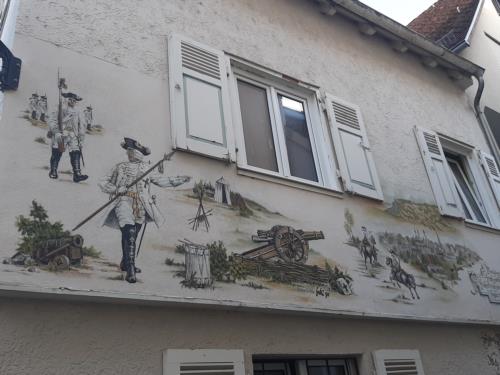 | War on the Wall Elayla, coming from Aleppo in Syria, does not understand a painting on a house wall which shows a scenery of the city's history with men in uniforms and wigs, canons and landscape. She is told that the men are soldiers in 18th century uniforms, but the painting is much younger, probably from the middle of the 20th century. "Soldiers and canons as a decoration on a house wall but the painter missed to paint the dead men, women and children as well. I don't like that painting at all!"
Well, if you come from a war zone and experienced a terrible war, it is really difficult to understand such a wall painting. |
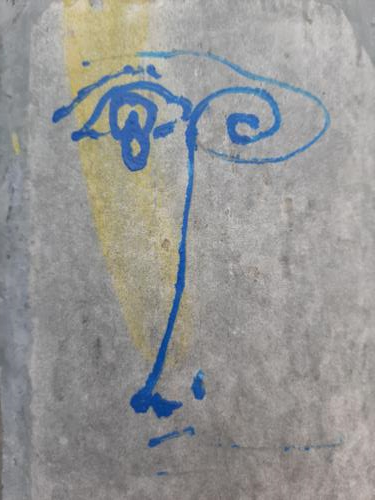 | Artistic graffito Normally, graffiti are regarded as smearings rather than artistic expressions, at least in Germany. However, graffiti has changed over the years. Like any other form of art, it can transcend boundaries and remains a powerful form of artistic expression. Maybe in future times people will appreciate griffiti as they meanwhile do with the scribblings at the former Berlin wall? As long as it not an act of vandalism, it is a constructive art form.
During the photo walk, Zola from Ghana saw this graffito of a face at a lamppost. She liked it very much! Overall, it is a very small one, about 10 cm x 20 cm. And it certainly has an artistic quality, no doubt. Hopefully, the unknown "artist" has found another way to express him/herself... |
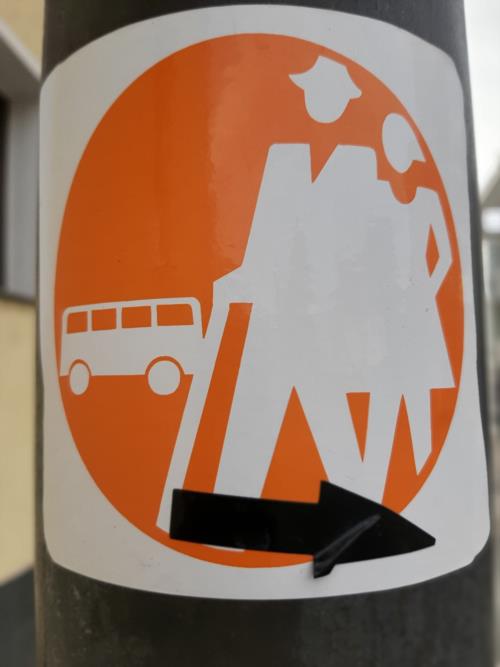 | Guided tour Zeynep from Iran recognized all over the city stickers with pictures of a bus, a walking couple and an arrow. She is asked on her opinion on that. She wonders what it could be: an artistic project? A secret code? Guidance to the bus station? She is explained that these are stickers for a special guided tour which should be done walking by foot. The bus symbol indicates that the tour starts at a bus stop and that no car is needed.
Walking around for fun and recreation is very strange for her. She knows that Europeans go for walks and many love to hike in their leisure time. Walking for her is a nightmare since she walked great parts of her journey to Europe.
"We only wore sneakers, some of us only had sandals. After the first hundred miles the shoes were hardly usable and our feet were full of blisters", she explains. She wrapped old newspapers around her feet so that the torn material of the sneakers did not make the blisters worse. When she arrived in Germany, her feet received medical treatment, but the scars remained. Hiking as recreation? Not for her. "My feet hurt far too often to find pleasure in it," she says. |
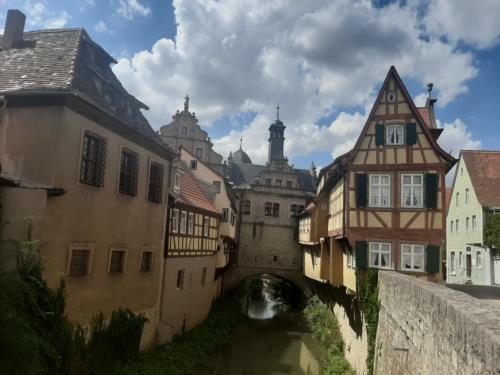 | Eight centuries in one picture We visited a small town called Marktbreit in Franconia. The center is a kind of role model for small historic cities in Germany. Our women migrants' group are facinated by the fact that buildings from 8 centuries - the Middle Ages, Renaissance, Baroque and modern times - can be depicted on a single picture. "Quite a lot of history" is their comment. |
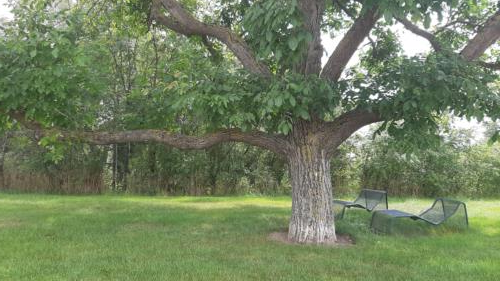 | Resting place under trees On the way we find a resting place under trees - it is a very nice place under an old walnut tree. All the migrants women seem to feel the peace and beauty of the place. But what is it that appeals to them most? "The green shadow," says Zeynap, and the other women nod. |